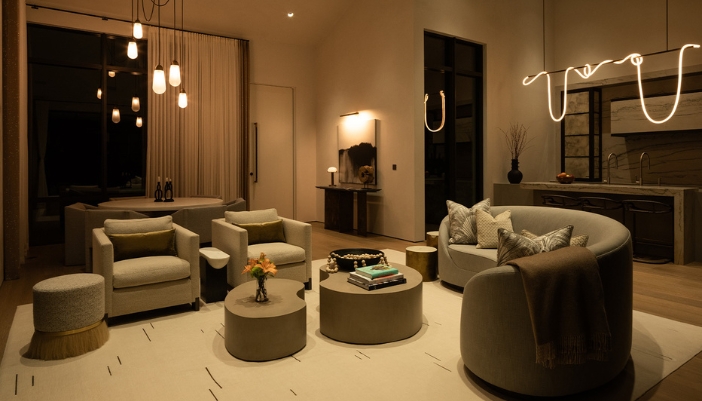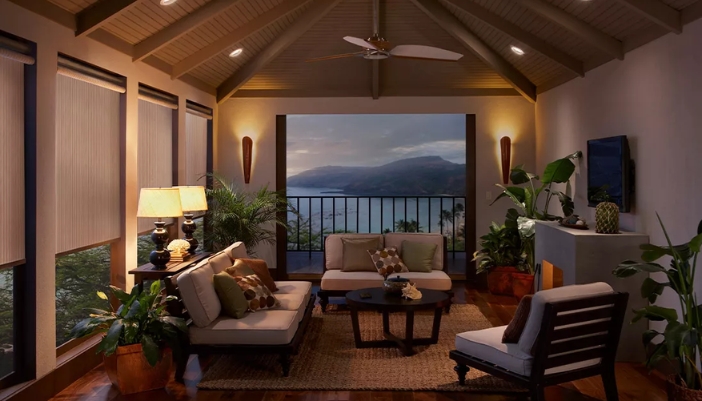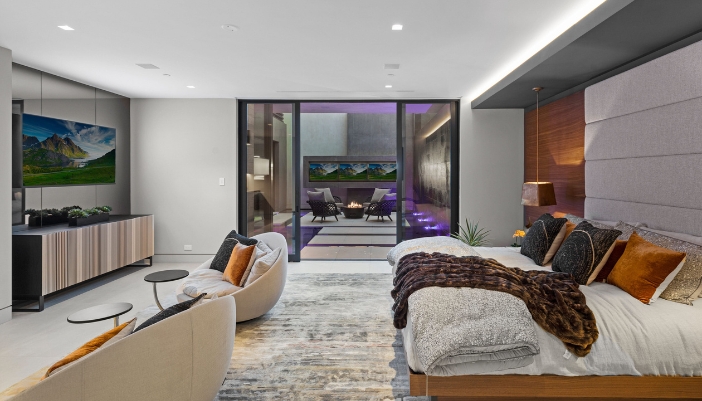Lighting is more than illumination—it’s a design tool that shapes how we experience a space. One of the most impactful choices in any lighting plan is how the light is delivered.
So, what’s the difference between direct and indirect lighting, and when should you use each?
Let’s break it down.
What Is Direct Lighting?

Source: Lutron Luxury
Direct lighting casts light straight from the source onto a surface or object—think downlights over a kitchen island or a reading lamp beside the bed. It’s focused, functional, and often task-oriented.
Best for:
- Kitchens (task lighting)
- Workspaces
- Bathrooms
- Highlighting art or architectural features
What Is Indirect Lighting?

Source: Lutron Luxury
Indirect lighting is bounced off another surface—like a ceiling, wall, or cove—before it reaches your eyes. The result is a softer, more ambient glow that gently fills the space.
Best for:
- Living rooms
- Bedrooms
- Hallways or circulation areas
- Creating a relaxed, architectural feel
Why the Best Lighting Designs Use Both

La Jolla Waterfront Residential Project
The key to great lighting isn’t choosing one over the other—it’s knowing how to layer them.
At LIGHTWORKS, we work with homeowners, designers, and builders to create lighting plans that combine direct and indirect sources to achieve the right balance of function, comfort, and drama.
Indirect lighting creates atmosphere. Direct lighting brings precision. Together, they shape every moment you spend in your space.
Which Lighting Style Should You Prioritize?
It depends on the purpose of the room, the architecture, and the kind of experience you want to create.
Here’s a quick rule of thumb:
- Prefer a clean ceiling and subtle ambiance? Use more indirect lighting.
- Need high performance and precision? Prioritize direct lighting—placed thoughtfully and shielded to avoid glare.
In most homes, the best results come from a layered design. We often combine recessed downlights with indirect coves, uplighting, or even tunable color temperature to adapt from day to night.
Use the guide below to help decide where your lighting plan should lean:
| Focus More on Direct Lighting | Focus More on Indirect Lighting |
|---|---|
| ✔ You need clarity for tasks like cooking or reading | ✔ You want a relaxed, welcoming atmosphere |
| ✔ You want to highlight artwork, countertops, or architectural details | ✔ You prefer soft, evenly distributed light |
| ✔ You don’t mind seeing the light source (pendants, downlights) | ✔ You want to minimize ceiling clutter and fixture visibility |
| ✔ You want a brighter, more energetic feel in the room | ✔ You want the lighting to blend with the architecture |
| Best spaces: Kitchens, home offices, bathrooms, garages | Best spaces: Living rooms, bedrooms, hallways, media rooms |
See the Difference for Yourself
Through our curated product lines and design approach, we showcase both lighting styles—often in the same room. From architectural fixtures to human-centric controls, LIGHTWORKS helps you see your home in the best possible light.
Book a visit to our showroom or ask us about lighting for your next project. We’ll guide you through every layer.